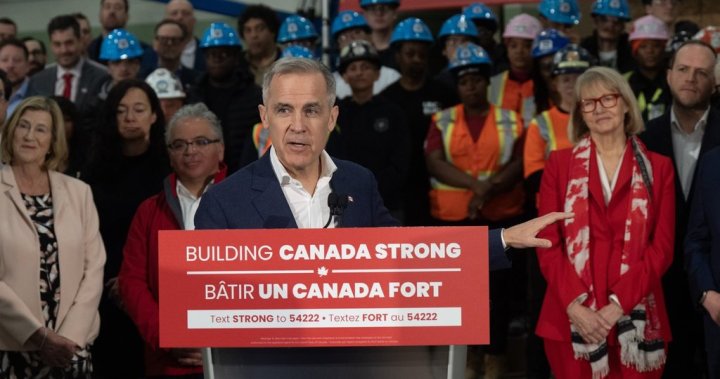Now that Mark Carney and the Liberal Party have won the election, the focus is about to shift to whether they can follow through on vows to bolster the economy as U.S. President Donald Trump’s trade war ramps up.
Carney has addressed the need for unifying the country and diversifying its trading partners to pivot away from relying on the United States and reducing the impact of Trump’s tariff policies.
More specifically, the newly-elected prime minister wants to maximize Canada’s ability to domestically source and manufacture resources, goods and services, while also creating or boosting ties with international markets.
And while his pledge to improve trade between provinces and craft more “Made in Canada” supply chains could prove among the most impactful measures, it may also prove the most challenging.

What is Carney proposing?
According to the Liberal Party’s platform, achieving these goals could expand the economy by billions of dollars, but it will not be easy as many parts of Canada’s domestic supply chains will need reworking.
Carney’s plans to build infrastructure, housing and energy projects rely heavily on key materials sectors, including steel, aluminum and lumber, and critical minerals like lithium, nickel and copper.
To speed things up, Carney proposed a ‘backwards integration’ strategy.
All of these sectors rely on supply chains — a series of production and logistical steps from raw materials to finished products.
Carney wants to make it so more of those supply chains — especially for critical sectors — effectively feed into each other domestically to support Canadian industries. The idea is that this would mean more protection and control against outside shocks: for example, Trump’s tariffs.

Get breaking National news
For news impacting Canada and around the world, sign up for breaking news alerts delivered directly to you when they happen.
To manufacture a car in Canada, for instance, thousands of parts such as an engine block or battery will be made from different materials such as steel, aluminum, nickel or cobalt that come from different mines across various regions.
After those parts are made, they might travel to other facilities, including in the U.S., for further steps before returning to the assembly plant to go into the actual vehicle.
Backwards integration — or a “Made in Canada” supply chain — would mean more of the parts and processes come from and stay in Canada.
On top of the 25 per cent base tariffs currently imposed on all non-CUSMA Canadian imports by the U.S., there is an additional 25 per cent duty applied to aluminum and steel products.
In the case of auto parts crossing the border multiple times as part of the current manufacturing process, the costs add up quickly and will ultimately mean more expensive vehicles for buyers.
But if more domestic steel and aluminum goes into Canada’s auto manufacturing supply chain, or into the housing industry, then that would mean more business for domestic steel and aluminum producers along with more reliable providers for the industries buying that material.

How fast could it happen?
Already, the U.S. economy has contracted in the first quarter amid Trump’s trade war.
And in Canada, there are also fears of a coming downturn, with job losses already evident.
Carney has said Canada needs to “dramatically reduce” reliance on the U.S., and stressed his government would build an “all in Canada network for auto manufacturing components.”
During the federal election campaign, Conservative Leader Pierre Poilievre had pushed that the same idea should apply to sectors like lumber and homebuilding.
“We can build millions of new homes with Canadian lumber that will get the workers at this mill and in the forests of Canada, can make bigger paycheques, which they could bring to houses that they can afford to buy,” Poilievre said in March.
But it will take time to adapt Canadian supply chains to move internal trade more easily.
“It takes time when you change the flow of goods and services from our dominant north-south relationship that we’ve had to make it coming more from internal and then coming around through our parts on the east and the west coast and maybe in the future from the north,” says professor David A. Johnston at Schulich School of Business.
“Rail services need to connect to ports, trucks need to have relatively congestion-free roads to get the products to all these distribution points. So the important thing for people to realize is that you have to build the infrastructure to make that economic prosperity happen, but it doesn’t turn on a dime.”

And changes of this magnitude might not happen fast.
“I would be cautious about the timelines,” said Akaash Maharaj, global affairs and public policy senior fellow at the University of Toronto.
“He [Carney] is setting himself up to trying to achieve within a few weeks what his predecessors have not been able to achieve in a century and a half.”
And Maharaj says Canada could benefit greatly.
“If Carney is successful in dismantling inter-provincial trade barriers, then not only could he mitigate the worst effects of the Trump trade war, it could actually leave our country wealthier, more prosperous and more stable than we were going into this.”
© 2025 Global News, a division of Corus Entertainment Inc.
How fast could Carney rework Canada’s supply chains amid trade war?





